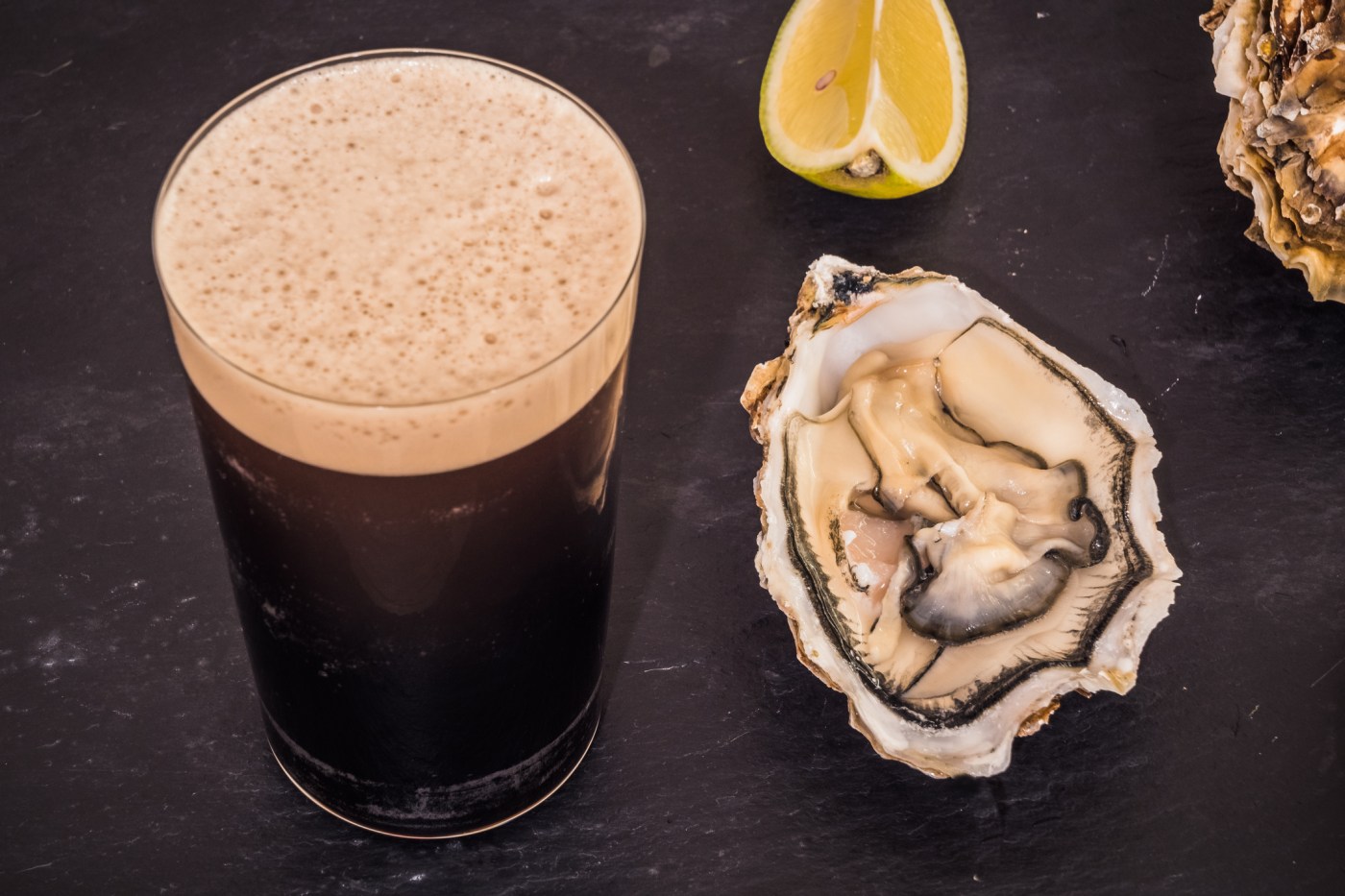Pairing oysters and beer is not only an excellent combination, it’s also no newfangled trend. This snack-drink combo has been popular in the British Isles for a very long time — since the Victorian era.
Fun fact: It was once common for breweries to brew with oysters. In addition to using the oysters themselves in brewing, brewers used the shells as a makeshift filter, which flavored the water and thus the beer itself.
This unusual brewing style emerged in the late 1800s in Ireland and England, where it was common to serve oysters near the sea, often with stouts, which were also popular at the time. Back then, oysters were not considered a delicacy. They were inexpensive bar snacks in seaside towns.
If you don’t like oysters or stouts, this may not be your favorite dish. But even for someone who’s not a seafood lover — like myself — it’s still a very good, if admittedly unintuitive, pairing of flavors. And there are two ways to approach it.
The first and easiest is to simply eat oysters and wash them down with an Irish dry stout. Other stouts will work, but you don’t want one that’s too hoppy or too alcoholic. Something milder like Guinness or Murphy’s is ideal. Great local examples abound too, including North Coast’s Old #38 Stout, Russian River’s O.V.L. Stout, Third Street Aleworks’ Blarney Sisters or Moylan’s Dragoons.
The briny sweetness and saltiness of the oysters complement the beer’s smooth, roasted malt flavors, which are also a little sweet. The sweetness in the two work together, while the brine and roast provide delicious contrast.
Pairing oysters with a stout has been the gold standard for more than a century, but a few other styles will work also work nicely. Try pilsners or an IPA that tends to be more on the tropical side, a Belgian-style tripel, a gose, a tart sour beer or even a gueuze. And if you’re having smoked oysters, you can’t do better than a rauchbier, a beer brewed using smoked malt.
Of course, there are numerous places to find fresh oysters in the Bay Area’s big cities, as well as smaller spots near the coast. My favorite is the Bodega Bay Oyster Co. in Petaluma, which has a well-curated beer list. The most well-known is likely Hog Island Oyster Co., which has several Bay Area locations. There’s also Valley Ford’s Rocker Oysterfeller’s and in Marshall, The Marshall Store, Tomales Bay Oyster Co., Nick’s Cove and Tony’s Seafood. Plus, there are countless places in San Francisco, Oakland, and San Jose.
Related Articles
Sunnyvale’s ShaKa Brewing closes down
Brewery Day Trip: Two San Jose breweries worth a visit
Trumer Pils is brewing a new beer for its 20th Berkeley anniversary
Celebrate Independence Day with these independent American craft lagers
The perfect day trip to Yolo County’s sunflower paradise
The second way to enjoy the pairing — and arguably the best — is to find an actual oyster stout, one that’s brewed with oysters, shells or both. Nineteenth century brewers used the shells as a filter, pouring the mash over them to remove the spent grain from the wort (the liquid containing sugars that yeast feed on to create beer or whiskey).
Oyster shells are made of calcium carbonate, which is essentially a chalk that helps reduce acidity in the brewing process. They can be added during the mash or boil, during fermentation or even when conditioning, and how they’re expressed in the final beer will vary accordingly. These days, however, it’s probably more common to add it during the boil.
The oyster stout from HenHouse Brewing Co. is brewed with whole oysters from Hog Island Oyster Co., with sea salt and local malts from Admiral Maltings. (Courtesy HenHouse Brewing Co.)
It wasn’t until around 1929, likely in New Zealand, that brewers started adding the oysters themselves to the brewing process. This resulted in much stronger briny flavors. Having an actual oyster stout pairs like with like, but retains the strong contrast of the roasted malt and salty, savory oysters.
True oyster stouts can be difficult to find these days. One of the best, the Porterhouse Oyster Stout from Dublin, Ireland, isn’t available in California. But Petaluma’s HenHouse Brewing makes quite a good oyster stout, brewed with whole oysters from nearby Hog Island Oyster Co. They also add a touch of sea salt and use malts from Alameda’s Admiral Maltings that impart chocolate and coffee notes.
The next time you’re having oysters, try them with an oyster stout or an Irish dry stout and discover why this unlikely combination has been popular for so long.
Contact Jay R. Brooks at BrooksOnBeer@gmail.com.
For more food and drink coverage
follow us on Flipboard.












